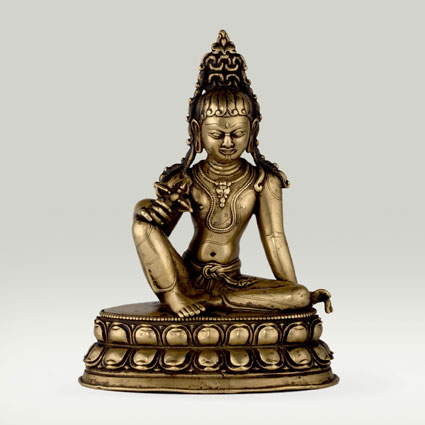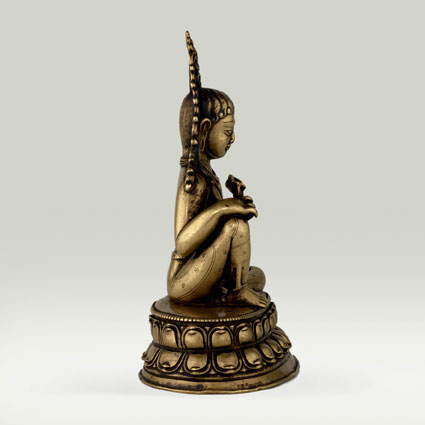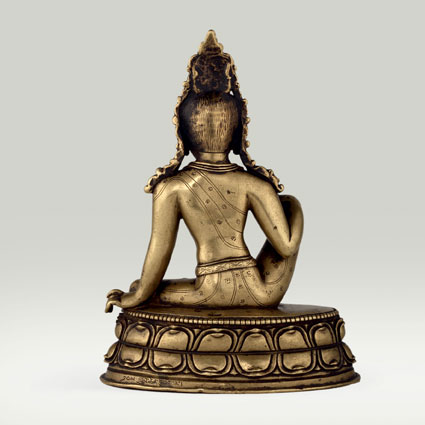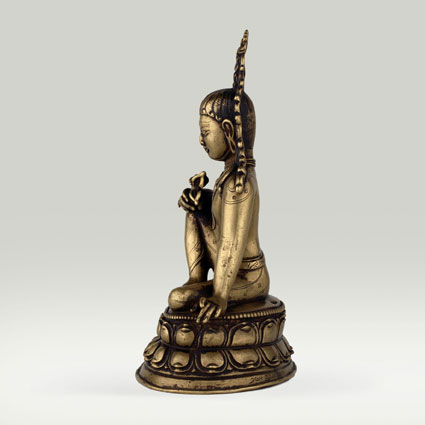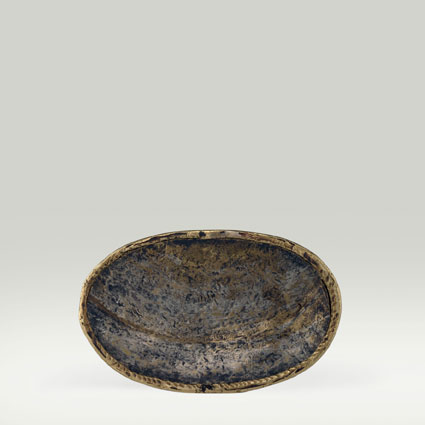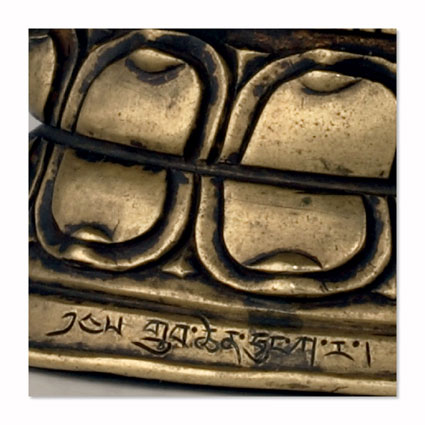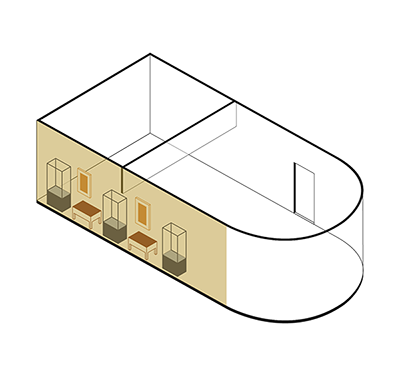ABS 037
Code: ABS 037
Country: Tibet (central)
Style:
Date: 1200 - 1300
Dimensions in cm WxHxD: 13.4 x 17.6 x 8.4
Materials: Brass
Hollow cast in one piece.
The bottom of the image is not sealed.
The Mahasiddha is seated in the attitude of royal ease (rajalilasana) on an oval, double lotus pedestal. In the right hand resting on his right knee he carries a Visvavajra. The left hand is placed on the rim of the lotus pedestal.
At the back of the pedestal is a short inscription in dBu can script:
// Grub chen hum ka ra//. "Mahasiddha Humkara".
Yantra Yoga is one of the most ancient and dynamic systems of yoga, first brought to the West by the Dzogchen Master Chögyal Namkhai Norbu in the 1960s. The lineage can be traced back through the Nepalese Mahasiddha Humkara who transmitted it to Guru Padmasambhava, the great master who first introduced the Vajrayana teachings into Tibet in the eighth century.
Humkara was a cowherd who noticed a master meditating in the forest and wondered why he should have to work, when the master apparently did nothing. He asked the master to teach him how to live without eating or feeling the cold in winter. The master refused because the teaching was about something much more important. Humkara was finally accepted and eventually became a great Mahasiddha himself.
Bock, Etienne; Falcombello, Jean-Marc; Jenny Magali, 2022. Trésors du Tibet. Sur les pas de Milarépa.. Paris: Flammarion. p. 117
Dudjom Rinpoche (ed.), 1991. The Nyingma School of Tibetan Buddhism, 2 Vols. Boston: Widsom Publ.. Pp.475-77: (humkara is holding in both hands, turned inwards and crossed over the chest, five pronged diamond sceptres (pancasucika-vajra). According to Amy Heller two vajras is the same as a visvavajra - Compare
Huntington, John C.; Bangdel, Dina und Arvidsson, Björn (Traduction), 2010. Le Cercle de la Félicité. Art Méditatif Bhouddhique. «The cercle of Bliss. Buddhist meditational Art».. Genève: Duo Visual. p.76-77
von Schroeder, Heidi, 2006. Schritte zur Erkenntnis: Neuzugänge der Tibet-Sammlung der Berti Aschmann-Stiftung im Museum Rietberg Zürich. Zürich: Museum Rietberg. p. 38-39
von Schroeder, Ulrich, 2006. Empowered Masters: Tibetan wall paintings of Mahasiddhas at Gyantse. Chicago: Serindia Publications ; and Hong Kong: Visual Dharma Publications, Ltd.,. p. 30-31

